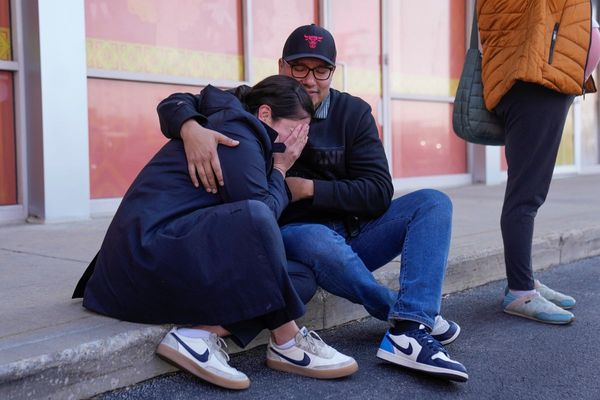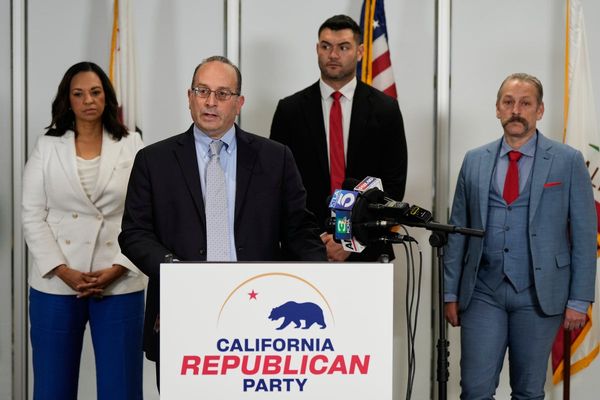
Big Money Unleashed: The Campaign to Deregulate Election Spending, by Ann Southworth, University of Chicago Press, 336 pages, $32.50
A decade ago, it passed for common wisdom that the Republican Party and maybe the Democrats too were captives of a wealthy donor base that could lock up electoral results by burying rivals in campaign spending.
It all seems long ago. As populist energies surged through U.S. politics following the rise of Donald Trump, Big Money's power has come to seem overrated, to say the least. Corporate America preferred almost any random Republican off the street to Trump, which made no difference. Democrats, who'd been doing well with business donors for years, have outraised and outspent Trump by a wide margin each time, and that didn't seem to matter much either. Even so-called dark money, a category in which the Democrats surged ahead in the 2018 and 2020 cycles, seems to have lost its magical powers.
For years, reformers had been arranging the rules in ways that benefited candidates who could marshal small donations and what is called earned media, as opposed to paid advertising. As it happened, Trump excelled at both these skills. So did others: On Capitol Hill, Republican and Democratic grandees alike were toppled in primaries by unknown challengers with scant funding but a more militant ideological tone and savvy social media skills. That's what happened in the 2018 New York primary where little-known challenger Alexandria Ocasio–Cortez handily beat Democratic House Caucus chair Joe Crowley after being outspent 18 to 1 ($1.5 million to $83,000).
Perhaps I'm being too bold in saying that the panic over money in politics is now dead. But if you want to revisit that controversy from a point at which it was very much alive, Ann Southworth's Big Money Unleashed is a reasonably illuminating new book. It offers insight into what veteran campaign finance lawyers were thinking as they looked back a few years after the Supreme Court's 2010 case of Citizens United v. Federal Election Commission.
In Citizens United, the high court laid out a clear and straightforward application of the First Amendment: You are entitled to speak your mind at your own expense about political candidates, so long as your speech is not a quid pro quo trade of favors. What's more, that liberty applies to associations and businesses, not just individuals.
Then-President Barack Obama declared that the decision "strikes at our democracy itself." Misconceptions were launched about the origins of legal personhood for corporations that continue to be spread to this day. Whole organizations were founded with names like End Citizens United.
From this book's title, I was braced for another diatribe about The Case That Ruined Everything. Happily, that isn't what I found. In the aftermath of the decision, Southworth, a law professor at the University of California, Irvine, decided to interview dozens of lawyers on the front lines of constitutional campaign finance litigation, both "reformers" (as she calls those favorably disposed to regulation) and "challengers" (as she calls those who want the courts to invalidate many such rules). Allowing them anonymity to encourage candor, she asked them how they saw their work, what they thought of the other lawyers and groups, and much more.
Those interviews are at the heart of the book. Having spoken to a fair number of legal types in this area myself, I think they ring true. While Southworth's own sympathies appear to lie with the reformers, she lets both sides speak for themselves, often in long direct quotes. (I wouldn't be surprised if one or more of her interview subjects were associated with my own Cato Institute, which gets mentioned fairly often, but I haven't tried to check.)
In all, she interviewed 52 lawyers from July 2015 to November 2017. That's what I mean about the timing problem—though I don't dismiss the value of having a snapshot of the insider debate shortly before things changed.
Southworth sets the stage by laying out the legal cases. In the early constitutional challenges, she notes, neither the parties nor the amicus briefs fell out particularly along partisan lines.
Prevailing majorities crossed left-right lines in such early campaign finance cases as Buckley v. Valeo (1976) and First National Bank of Boston v. Bellotti (1978). In the 5–4 case of FEC v. Massachusetts Citizens for Life (1986), the liberal lion William Brennan, writing for the Supreme Court majority, found that cause-oriented nonprofits that were plainly independent from corporate or union donors had a First Amendment right to publish flyers rating politicians' stands on their issues. At the same time, Brennan was adamant against allowing business any such rights. Meanwhile, Chief Justice William Rehnquist—then considered the Court's archconservative—was a reliable vote to uphold campaign regulations of all sorts.
Later Republican appointees took a more expansive view of the First Amendment than Rehnquist did. By the '90s, today's familiar left-right alignment had settled into place.
While the reformer side drew heavily on the views and talent of law professors, the challengers too drew intellectual guidance from a dissident band of legal academics who saw the First Amendment issues in their full scope before the Court did. These undersung heroes of liberty included Lillian BeVier of the University of Virginia, Martin Redish of Northwestern University, and the late Ralph Winter of Yale University.
The lawyers who spoke with Southworth fell mostly into two categories: those employed by advocacy groups, and those who "practiced in court on behalf of candidates and parties." In general, the advocacy-group lawyers "expressed stronger views and used sharper rhetoric," while the practicing litigators couched issues in a more nuanced way and sometimes threw shade on "what they viewed as the simplistic" takes of their allies.
Daniel Patrick Moynihan once said that institutions that fight each other come to resemble each other. Sure enough, the reformer and challenger camps have more than a little in common. Both rely on foundation support, with the reformers backed by the likes of the Joyce Foundation, Pew Charitable Trusts, Ford Foundation, and George Soros's Open Society Foundations while the challengers draw on the Bradley and Searle foundations (both of which have supported Reason Foundation, which publishes this magazine), among others. The reformers had a considerable head start, with a "center-left network" having "been dominant among legal elites through the mid-1980s."
Southworth—the author of an earlier book on the conservative legal movement, Lawyers of the Right—generally avoids caricaturing either side. She is especially interested in questions of coalition dynamics. What makes groups with little outward in common cooperate? Why do gun rights groups so avidly support the challenger cause, and environmental groups the reformer? Part of the answer is plausible enough: "You don't argue against your friends," as one reformer told her.
She presses a conservative populist on this point: Doesn't your work here simply help big business? But it seems to me that her own interviews, as well as her source material, provide a more than adequate answer to her question. To begin with, a remarkable number of key legal cases—from the aforementioned FEC v. Massachusetts Citizens for Life through FEC v. Wisconsin Right to Life (2007) to Susan B. Anthony List v. Driehaus (2014)—bear the names of anti-abortion groups. This probably reflects the fact that speaking about politicians' records is central to these groups' mission, and it might also suggest that campaign finance regulators have not taken an exactly friendly stance toward them over the years.
Another lawyer from the challenger side who identifies as a grassroots "outsider" tells Southworth that while he feels an antagonism toward the GOP's business wing, he thinks the correct course of action is to outvote it, not to try to regulate its speech.
After reading the interview excerpts, I concluded that one reason campaign finance regulation has been faring poorly is that it tends to unite right-of-center groups while dividing the left. To be sure, the reformer coalition is good at not showing visible fissures on this issue; the nearest thing to a crack is the way some leaders of the American Civil Liberties Union still stand up for the First Amendment side. Below the surface, however, many tensions simmer. Behind the fine talk of democratic values, nearly all of the major participants in the reformer coalition are closely calculating their self-interest.
Unions? They were directly regulated by the law struck down in Citizens United. Progressive nonprofits? They've "always been a little bit leery" of this kind of regulation, notes one lawyer, since they can wind up in the target sights. "The NAACP gets tons of corporate money, tons of corporate money, because corporations want to buy favor with civil rights groups," says another. Hollywood liberals? Among the great fundraisers of all time. You get the picture.
Pick whatever issue you will, and you will find people with money on both sides. One of Southworth's informants sums it up well: "In America, there is no moneyed interest. There are people with money, but their interests are so varied, enormously varied and conflicting." We can't, and shouldn't want to, throttle them all.
The post A Look Back at the Panic Over Big Money in Politics appeared first on Reason.com.







